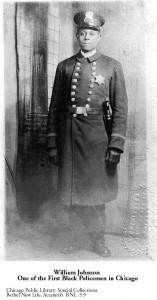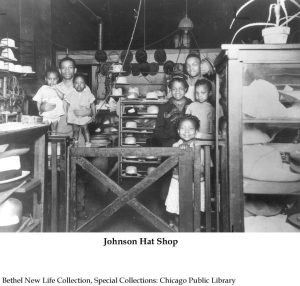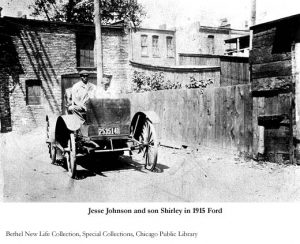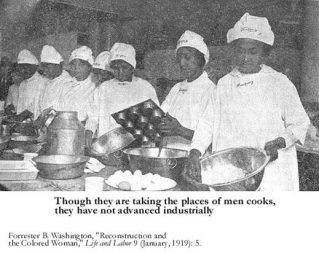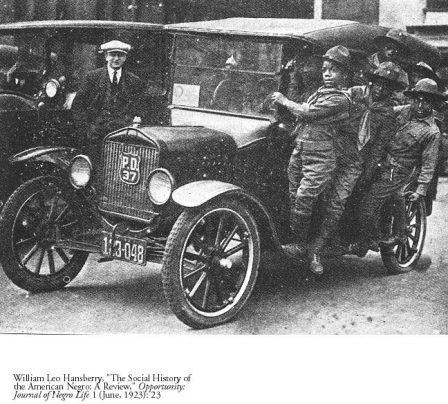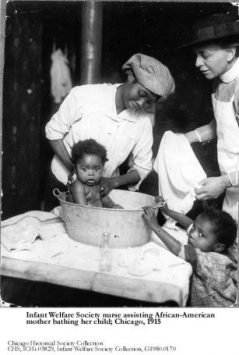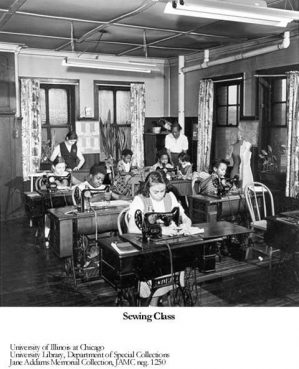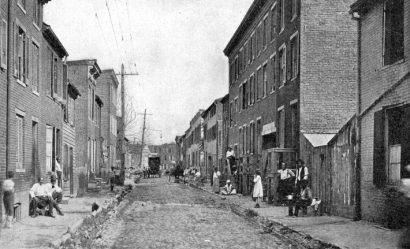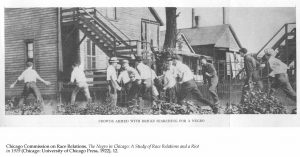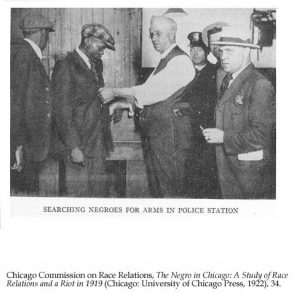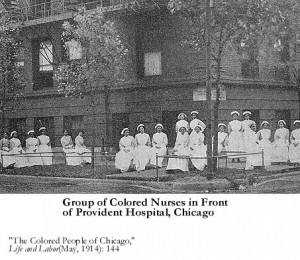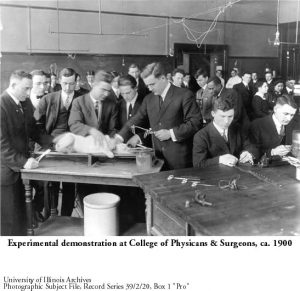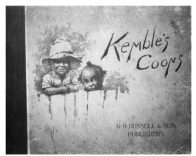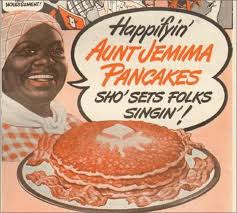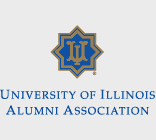CONTENT
- HOME PAGE
- PROLOGUE AN URBAN LEGACY
- INTRODUCING THE WEST SIDE
- 19th-CENTURY CAMERA
- URBAN PHOTOGRAPHERS HINE AND KIRKLAND
- PICTORIAL CHICAGO
- CHICAGO ENLIGHTENED CITY BEAUTIFUL
- CHICAGO GROTESQUE LAWLESS STREETS
- HULL-HOUSE "OASIS" IN A SLUM
- IMMIGRANT EMIGRANT CITY
- "ALIEN" COLONIES
- "RACE" COLONIES
- GHETTO LIVING
- "CHEAP" ECONOMY
- FAMILY
- AMUSEMENTS
- PUBLIC HEALTH
- TENEMENTS
- URBAN SOCIOLOGY CHICAGO SCHOOL
- MAXWELL STREET ARCHITECTURE TOUR
- CHICAGO CITY MAPS
AFRICAN AMERICAN: LAKE STREET
INTRODUCTION
PHOTO GALLERY
COLOR LINE: CHICAGO DEFENDER (1912-1914)
- The Chicago Defender and the West Side by Wendy Plotkin
- Chicago’s Jim Crow Jail (1912)
- Ella Flagg Young Opposes Jim Crow Schools (1912)
- Colored Waiters Draw Color Line On Woman Of Race (1913)
- Chief Justice Olsen Kills Color Line (1914)
- Teachers Draw Color Line In Public Schools (1914)
COLOR LINE: CHICAGO DAILY TRIBUNE (1901-1912)
- Surprise South by Color Line (1901)
- Vote Against Color Line (1901)
- Color Line Trips Women (1902)
- Women Rule On Color Problem (1902)
- Color Line Kills Union (1903)
- Negro Problem Harder Now (1903)
- Negro Question In Chicago (1903)
- Race Prejudice Invades Schools (1903)
- Negroes Reveal Success Secrets (1912)
RACE PREJUDICE: NEGRO IN CHICAGO (1862-1913)
- Negro Labor Question in Chicago (1862)
- Colored Men Of Chicago (1870)
- Colored Presbyterians In Chicago, Why Not! (1885)
- The Inferior or Subject Race (1887)
- Race Prejudice in Chicago: In Some Restaurants (1897)
- The Race Problem is Solving Itself in this City (1890)
- They Reach Success In Business (1897)
- Bars Alien Colored Clubs, Baseball (1910)
- Predicts the End of Negro Race (1913)
WEST-SIDE NEWS: CHICAGO DEFENDER (1915-1922)
- Jan2-With West-Siders (1915)
- Jan9-With West-Siders (1915)
- Jan23-With West-Siders (1915)
- Feb13-With West-Siders (1915)
- Mar20-With West-Siders (1915)
- Aug5-West Side News (1919)
- Aug30-West Side News (1919)
- Feb4-West Side News (1922)
- Feb11-West Side News (1922)
- Feb18-West Side News (1922)
- Mar4-West Side News (1922)
HARRIET RICE AT HULL-HOUSE
AFRICAN-AMERICAN SETTLEMENT HOUSE
JANE ADDAMS, HULL HOUSE, AND RACE-RELATIONS (1912-1931)
- Jane Addams, Race Relations, and Hull-House by Wendy Plotkin
- Jews Come To Assistance (1912)
- Birth Of A Nation (1915)
- NAACP At Hull-House (1912)
- Jane Addams Bold Stand (1912)
- Social Work Conference (1926)
- The Progressive Party and The Negro by Jane Addams (1912)
- W.E.B DuBois To Jane Addams (1931)
THE NEGRO IN CHICAGO (1896-1922)
- Race Traits and Tendencies of the American Negro by Frederick L. Hoffman (1896)
- Crime Among the Negros in Chicago by Monroe N. Work (1900)
- Police Power: Schools for White and Colored Persons, The Yale Law Journal (1906)
- The Negro Problem Viewed Across the Color Line by Walter L. Fleming (1910)
- The Claim Of The Colored Child by Booker T. Washington (1911)
- Chicago Housing Conditions: The Problem Of The Negro by Alzada P. Comstock (1912)
- The Colored People Of Chicago by Elizabeth De Koven Bowen (1913)
- The Negro in Chicago by Junius B. Wood (1916)
- The Negro in Chicago: A Study of Race Relations and a Race Riot by The Chicago Commission on Race Relations (1922)
THE CHICAGO RACE RIOT (1919)
AFRICAN-AMERICAN MEDICAL TRAINING IN CHICAGO
- West-Side Medical Institutions and African-Americans by Wendy Plotkin
- African-American Chicago Medical Institutions: Photo Gallery
POPULAR CARTOONS “COONS” AND “COLORED”: “NO OFFENSE INTENDED” (1860-1904)
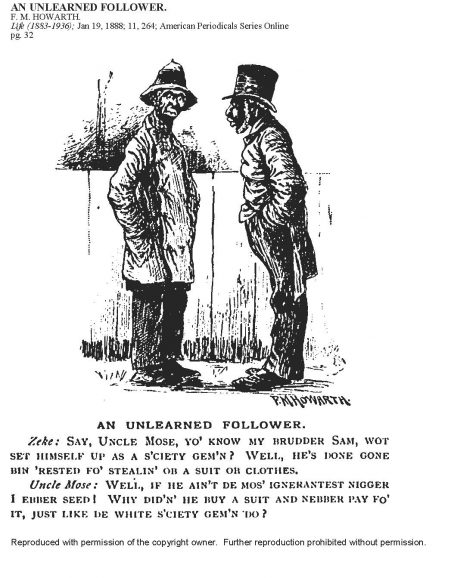
After the Civil War, cartooning stereotypes of African-American buffoons without the intelligence presumed to be required for participation in U.S. citizenship became a graphic best seller. In the glowing colored prints of the Darktown series (1879-1890) a mythic village of emancipated Blacks engaged in self-defeating infantile antics.
Lithographer printers Currier and Ives sharply honed the tomfoolery of a frenetic throng of colored folk imbued by stupidity. One single print in the popular Darktown series of 75 images sold 73,000 copies, adorning parlor walls in white middle-class homes. In one frame, a call to the Darktown fire department sent out with great fanfare a clownish circus of volunteers entertaining themselves with frenetic gymnastics.
E.W. Kemble, a contributor and staff political cartoonist for major magazines in the later nineteenth century, first pictured a childish superstitious “Nigger Jim” in Mark Twain’s Adventures of Huckleberry Finn (1884). Kemble went on to build a solid reputation for race drawings including the publication of A Coon Alphabet (1898) featuring the ludicrous slap-stick consequences of Black America’s abysmal ignorance of basic knowledge for protection of life and limb.
Cartoonish images of “Mammy” and “Aunt Jemima” (pancakes: “slave in a box”) from the later-nineteenth century played more positive nurturing roles in commercial advertisements targeted at the kitchen and food-way consumption patterns of middle-class white families. The exploited images of maternal Black women were consistently obsequious and persistently demeaning.
Among ethnic and nationality groups, only the caricaturing of “celestials” and the “heathen Chinese” compared with African-Americans in irredeemable racial bias. bjb
- Pomp & Circumstance (1860)
- Something Of A Change (1861)
- A Prospective Prospect (1862)
- Latest From Ethiopia (1862)
- First Bicycle In Remusville (1885)
- An Unlearned Follower (1888)
- One-Horse Power (1888)
- No Offense Intended (1889)
- Race Prejudice (1890)
- A Brooklyn Episode (1892)
- A Satisfactory Experiment (1893)
- A Punishment That Failed (1894)
- The Nigger In The Fence (1894)
- A Cat’s Paw (1895)
- Mr. Wolberton (1897)
- Lady’s Permission- Life (The Strategy 1899)
- Sorrows Of Three Coons (1903)
- Politics In The Zoo (1904)

